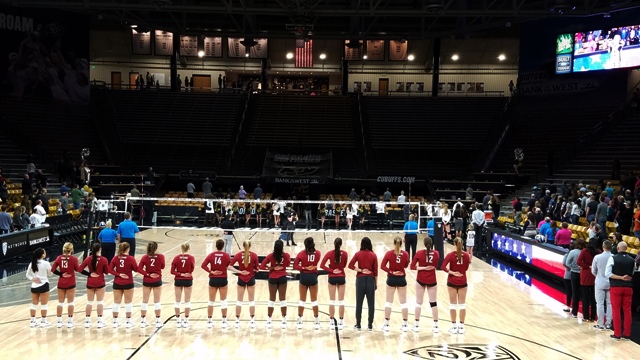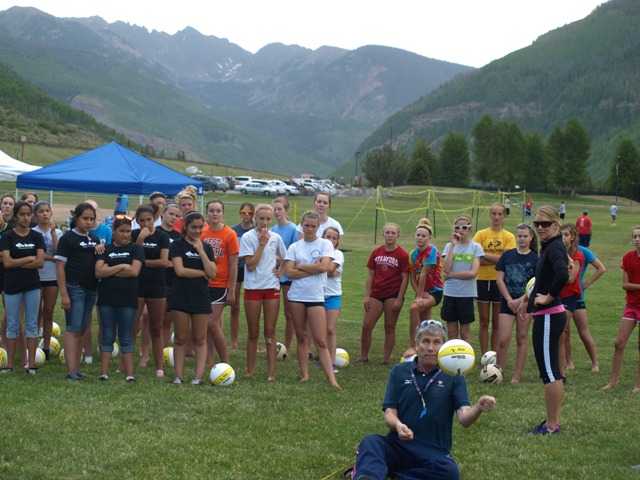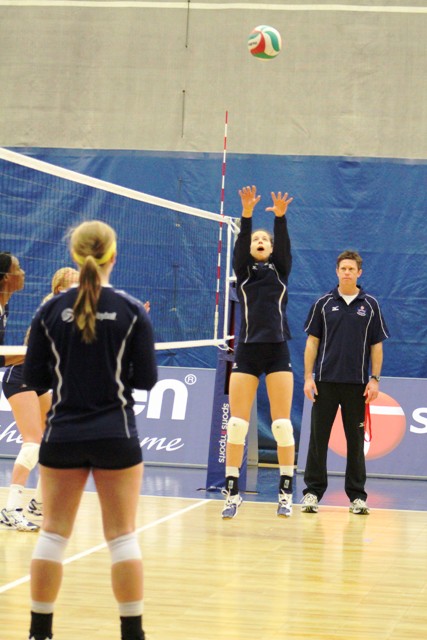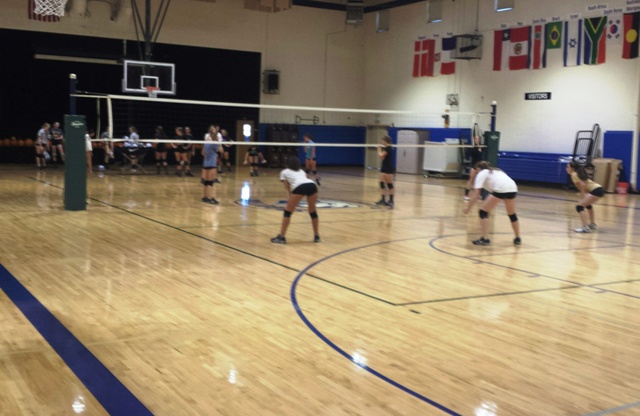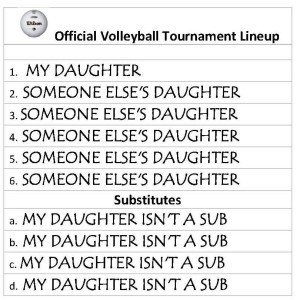The sport of volleyball is growing by leaps and bounds. About a quarter of adolescent American girls play some form of organized volleyball -that is the good news.
The bad news is the infrastructure is not in place to support the current rate of growth. The sport needs additional facilities and qualified club directors and coaches to handle the current demand, especially in Colorado.
This post focuses on comments from parents and players about club directors. The purpose of presenting this post is to illustrate the impact that club directors have on their players, parents, coaches, their program, and the sport, particularly when they don’t get things right.
The Snake Oil Salesman
Most club directors enthusiastically sell their club. Sometimes they are overzealous, much like a snake oil salesman, in describing the positive aspects of their program.
• Situation 1- At an open gym the director told a group of parents, “I have worked with the coach on court 1. She is the most amazing coach I have ever seen. Given her skill and the talent she has on that court, it wouldn’t surprise me if that team qualified for nationals.”
The coach was a wonderful human being, the girls loved her, but she ran horrible practices. The team started off around 15th in the division and ended the season around 20th – they got worse as the season progressed.
• Situation 2 – The director told a group of parents, “We are the only team in Colorado that teaches mental toughness as part of their program.” NOT!
• Situation 3 – At open gyms, club directors are frequently asked how many positions the club is trying to fill for the upcoming season. A common response is, “All positions on the team are open for competition, even the girls who played last year have to earn their positions on the team.”
If parents talk to the coaches they will often get a different story. The coaches will usually be more specific and identify which positions the team is actually looking for.
• Situation 4 – In private discussions, many directors have told parents, “Your daughter doesn’t have to be tall to play on this team.”
Right or wrong, the top clubs in most age categories place a premium on tall girls.
We Don’t Like Parents
• Some clubs have a policy of having closed practices. The justification for closed practices is usually cited as safety or liability. Some directors close practices because they claim it helps the players focus.
In 99% of the cases, club directors and coaches don’t like parents to be involved in the learning process. One director told a parent that since she initiated closed practices, her complaints from parents had declined.
Club directors who close practices lose the opportunity to include parents in the learning process. Parents are entitled to be part of that process since they pay the bills.
Open Door Policy
At an open gym the club director proudly stated to the parents,”I have an open door policy and welcome any comments by parents who want to make the club better.”
• Situation 1 – A group of parents talked to the club director because a coach was playing his daughter full-time and she was the worst player on the team.
The club director said he would look at the situation, but he never got back to the parents.
The parents later learned the coach was able to get special access to a local facility that the club used for practices two nights a week. The club director did not address the concern raised by the parents for fear of losing the practice space.
• Situation 2 – A parent sent the club director an email that addressed the lack of meaningful activity in practices. This included a timeline of drills and activities. The club director did not respond. The next time the parent saw him he asked the club director what his thoughts were about the email. The club director said he didn’t remember the email. He said his wife also used the club email for her personal use and probably deleted it before he had a chance to read it. He asked the parent to re-send the email. The parent re-sent it and never heard back from the club director.
• Situation 3 – A group of parents approached the club director because there wasn’t protective padding on the net posts where the team practiced. The club was renting the gym from a school and the club director blamed the problem on the school system. The parents offered to do a fundraiser to buy net pads so practices would be safer. The director said she would get back to the parents. She never followed up on this safety issue.
Out of Control
It was the last crossover match of the day in a 12U tournament and the teams were vying for 5th and 6th place in a Division Three match. The down referee, a 12-year old, made a call the coach didn’t like (the coach also happened to be the club director). For two minutes the coach yelled at the head official, the 12-year old down official, and then her team.
After the match the discussion in the parking lot varied greatly. Her supporters said, “She tried to get the kids to rally, but she waited too late. She usually throws her clipboard in those situations. I love her coaching style.” At the other end of the spectrum parents said, “Why doesn’t she pick on someone her own size. She is a good coach and club director. She doesn’t need to be such a jerk.”
It is My Way or the Highway
It is important for club directors to develop policies and make decisions that are in the best interest of the club, the coaches, and the players. Sometimes club directors make decisions for reasons that are hard to understand. 
• Situation 1 – At an open gym a club director talked about how certain teams traveled out-of-state. A parent asked him, “While it is fun for the kids to travel out-of-state, it doesn’t make sense for most teams to travel because they are not competitive at the national level. If a majority of the parents don’t want to travel out-of-state, does the team still have to?”
The club director, curtly responded, “I know what is best for the kids. If I think they should travel they will. The parents don’t have a say in this matter.”
• Situation 2 – In a Q&A session at an open gym, a parent asked the club director, “We have been in tryouts for 10 weeks. What team is our daughter going to play on – Black, Green, or Blue?”
The club director responded, “I appreciate your concern. Trust us, we know what we are doing. We appreciate your patience. Your daughter has been given a position on a team in her age group. We will continue to have tryouts for the next three weeks to see whether she plays on the Black, Green, or Blue team. We want to place as many kids on teams as possible. At this point we don’t know how many teams we are going to have and who is going to coach those teams. As the club director I want to personally make sure every player is properly placed in our program. There is a lot that goes into making this decision.”
The decision was delayed for three additional weeks so the club director could assign the handful of players “on the bubble” to their appropriate team. The reason for the delay was the coach had to attend to personal business.
Trust us, we want to do what is best for your daughters.
• Situation 3 – At a coaches conference, a club director talked about the steps he took to eliminate the problems caused by the parents of the players at his club. He resolved them by holding a meeting for the parents and telling them it was his job to be club director and not their friends. He politely said he didn’t care about their personal lives or the personal lives of the players. He pointed out that it was his job to provide the kids with quality instruction and a quality program and he didn’t have time to do that if he was chit chatting with parents or having to deal with their problems.
It Doesn’t Matter Who Coaches Your Kid
Parents and club directors sometimes do not see eye-to-eye about hiring qualified coaches, as illustrated by the following conversation.
Parent: Your club fees are $3,500 for the season, plus travel expenses. From my perspective that is a lot of money. Who is going to coach my daughter’s team? Of the 15 coaches on your staff, only one is certified. Why don’t you have more certified coaches beyond the mandatory USAV IMPACT certification?
Club Director: Actually we have other coaches who have taken First Aid courses and attended other workshops.
Parent: It is great that some of your coaches have attended workshops, but only one of your coaches is certified. Who will coach my daughter’s team?
Club Director: We haven’t decided yet. Besides, it doesn’t matter who coaches your daughter, all the coaches on my staff are excellent. In fact, I can guarantee you that your daughter will be happy with any of my coaches.
Parent: There are two reasons I am asking. First, my daughter has had some bad experiences with coaches in the past. It is important for her to be with a coach who she respects and who she will learn from. Second, my daughter has attended open gyms at your club and has found there are coaches who she could work with and there are coaches on your staff who she does not respect. I am hesitant to pay $3,500 to have her spend time with a coach she doesn’t respect, especially when I don’t get a chance to see the person coach or have the coach talk to my daughter.
Club Director: I don’t know why you feel that way. When you take your daughter to school you don’t have any say in who her teachers are. She needs to grow up and learn to deal with whoever is there to coach her.
Parent: Comparing your program to the school system is an inappropriate analogy. At the school my daughter attends we can request many of her teachers. You seem to forget that parents are paying you $3,500 for quality coaching. You may have the best staff in town, but if they were as good as you say, the parents and the players would be able to talk with them and watch them work with the players.
The preceding comments illustrate some of the challenges club directors and parents face. Club directors have a thankless job. It is difficult for them to get it right all of the time. Having said that, most of these concerns could be eliminated with improved organization and honest communications.
• Club directors should keep the focus on the athletes.
• Parents are part of the learning process.
• Parents have a responsibility to hold club directors accountable (in a professional manner) when they don’t get things right. And they should sing their praises on the many occasions they provide exemplary service.
• Most clubs do an adequate job, but they should be held to a higher standard. Parents should not support clubs that consistently do not get it right.
• Club directors should encourage their coaches to get certified in the USAV CAP program.
• Currently, the sport is in a growth mode. That will not always be the case. Some of the current business practices of club directors will not be satisfactory when the popularity of the sport levels out or declines.
• Volleyball club directors must be proactive in supporting the growth of the sport. This includes the construction of more volleyball facilities and the promotion of doubles and boys and adult volleyball programs.
